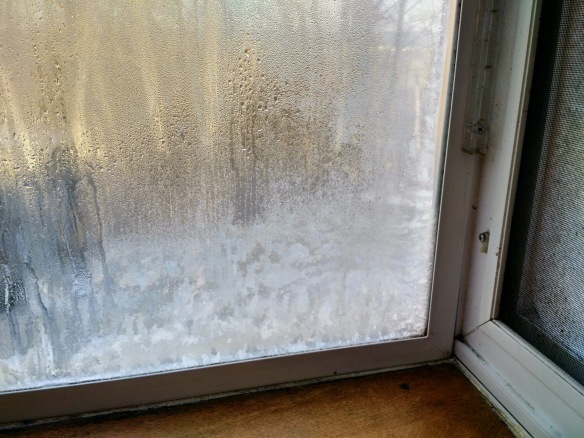I recently received this question on Quora and decided to share the answer with readers there as well as on TedsTips. I hope this will save some of you from heartbreak after your winter vacation!
A primary consideration in cold climates is pipes freezing. It is very important to realize that pipes can freeze even if the home temperature is above freezing due to the locations of the pipes. I once owned a townhouse where the pipes would freeze when the outside temperatures dipped into the single digits outside, even though we were warm inside the house. How? The pipes ran up through an inside wall, across the ceiling and over to an outside wall spigot. The inside wall, at the top, opened to the cold attic, so that cold air would get into the wall cavity and freeze the pipes. This was fixed by air sealing the top of that wall cavity, but required considerable detective work to figure out. The pipes running through the outer wall down to the spigot would freeze near the spigot where the pipes were exposed to cold temperature, so this run had to be isolated from the rest of the house plumbing and drained during the winter.
These are two examples, that show potential issues that are made worse by turning down the temperature while you are away. Imagine the situation where the pipes don’t freeze when the house is occupied and the walls are warm enough to keep the pipes from freezing. Now, imagine reducing the indoor temperature, maybe only a few degrees, but enough that the cold from the outside overwhelms the meager heat coming from the house that is able to reach the pipes. This has bitten many a homeowner during winter absences.
Unfortunately, there is really no way of knowing if this will happen until it happens. This is why it is critical that you turn off the main water valve for the water supply to your spigots in your house when you travel*. The pipes may still burst, but at least your house won’t flood. When you return after winter and turn the water back on, you’ll know quickly that there’s a leak and can turn off the water and fix the leak before catastrophic damage is done. This is no exaggeration – I was called into a home that was literally FILLED with mold and had to be gutted. A pipe had burst and the owner returned after a month to find the house completely flooded.
*I was reminded (see comment below article) that you MUST NOT turn off the make-up water supply if you have a boiler for heating your home. This is very important. Boilers need available water to maintain system pressure in your radiators etc. Without make-up water, the pressure in the system can drop and the system will stop functioning.
If you plan on leaving your home for an extended period, it is always a good idea to have your HVAC company give the heating system a once-over to ensure that it is in good working order. While there, they can advise you on which water valve you can safely turn off and which you should not touch. It would be advisable to label all the valves for future reference.
Flooding is the most damaging effect, but there’s another, more insidious issue that can arise during winter house shutdowns – condensation damage and mold.

Condensation can lead to mold and wood rot
In order to understand this, I have to touch on the physics of condensation. Condensation is the conversion of water vapor to liquid water that occurs at or below what is called the “dew point.” At normal temperatures (say 70F), condensation rarely occurs during the winter because the home humidity level is modest and most of the inside of the home is above the dew point. However, even with typical indoor humidity levels, you can experience condensation on windows, because windows get much colder than the insulated walls of the house. You might have noticed this if you have curtains or insulating blinds. These help keep your room warmer but allow the windows to get even colder because they intentionally reduce the windows sapping heat from the room. When you open the curtains, you might find the windows soaking wet from all the condensation. Worse, the wood around the window, especially at the bottom edge, might be saturated with water.
Under normal circumstances, you would see this in the morning and could dry off the wood and allow it to warm up when you open the curtains. But when you are away, even if you don’t turn down the thermostat, the water will remain and can get worse every day. Over time, this will likely lead to mold growth and if allowed long enough will rot out the wood. For this reason, I highly recommend that people leave their curtains and insulating shades “UP” or “OPEN” when they are away for extended periods. You want to minimize the chance of condensation buildup and the associated potential for mold and wood rot.
Let’s continue this thought experiment. If you turn down the thermostat enough, the inner surfaces of your house (walls etc.) can get to a temperature below the dew point and, just like those windows, the water vapor in the air can condense on those surfaces. Many people have made this mistake and come home to a horrible, moldy mess! For this reason, it is extremely important to do two things:
1 – do not turn down the heat excessively. It’s impossible to tell exactly what temperature is too low, but in most climates, people find 55F-60F is safest.
2 – make sure you don’t add any moisture to the air while you are gone. This can be disastrous. For example, many homes have central humidifiers built right into the heaters. If you leave this one it raises the humidity level inside the house every time the furnace runs, likely leading to moisture problems. Turn off all humidifiers before you leave!
Even if you don’t have humidifiers, natural ground moisture can seep into the house through the basement, crawlspaces, etc. This is especially common in homes with dirt floors underneath. Water vapor rises up into the house, driving up the humidity. If you live in such a home, it is really important that you monitor the humidity levels in the home to ensure that they are not too high. During winter, indoor humidity levels will naturally be low, typically less than 50% relative humidity. Humidity levels above 70% are considered too high as they promote mold growth. Get yourself a humidity monitor (they’re cheap on Amazon) and see what humidity levels are. Or better yet, get an Internet smart thermostat.

Get an Internet connected thermostat that monitors temperature and humidity
These let you to monitor indoor temperature and humidity levels while you are gone. These are affordable nowadays, and can give you tremendous peace of mind. A quick daily check on temperature and humidity gives you a read on the health of your home. It’s not a guarantee, as you still might have condensation problems, but at least you can be sure that the general climate inside your home is reasonable. It will also tell you that your heating system is working. If the temperature suddenly drops to 45 even though your thermostat is set to 55, you know there’s a problem and can call in help.
Have a wonderful winter. Hopefully you will avoid the main pitfalls that have hit too many other people. A few easy steps can greatly improve your odds of coming back to a healthy home!








